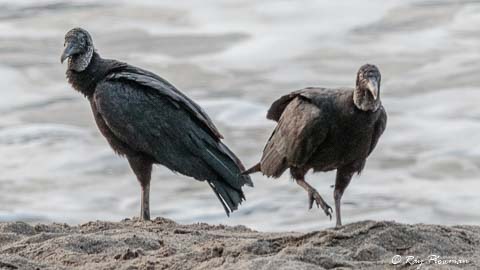Birds of Prey
The first gallery feature species from three families: Raptors (Accipitridae), cosmopolitan birds that occupy mostly forest and wooded habitat. New World Vultures (Cathartidae) hold an extreme range of land habitats in the New World. The Osprey (Pandionidae), a family of one species, that inhabit a broad array of coastal and water environments. See Taxonomy note at the end of this page. A supplementary gallery shows the plumage of juvenile, immature and adult White-bellied Sea Eagles. Displayed in the third gallery are Typical Owls (Strigidae), cosmopolitan birds that occupy terrestrial habitats from the Arctic to tropics.
The first behaviours gallery displays some aspects of raptor behaviour. The last four galleries feature photo essays of White-bellied Sea Eagles, Brahminy Kites, aerial conflict White-bellied Sea Eagle and Grey-headed Fish Eagle, and New World Vultures.
Raptors, NW Vultures and Osprey
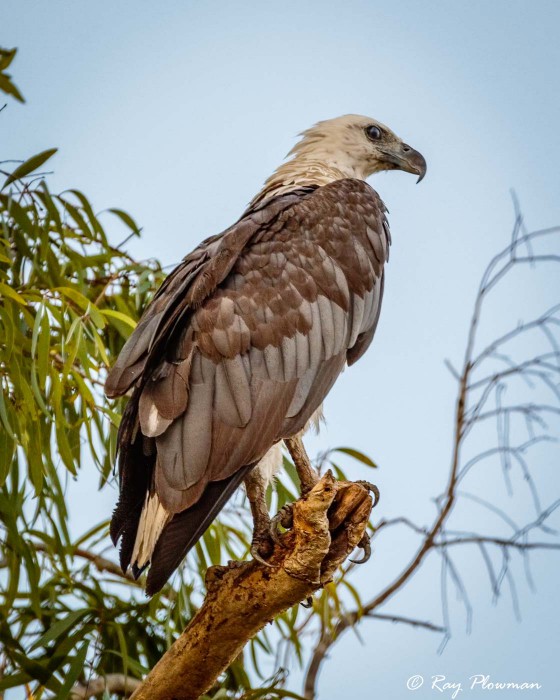
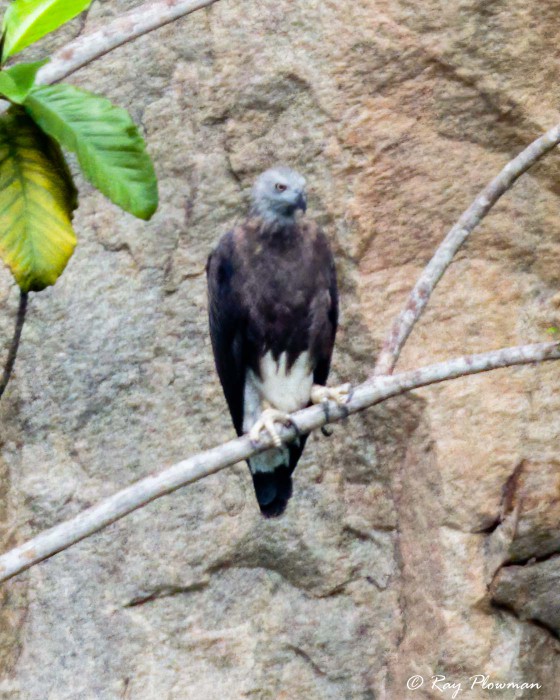
![[Crested] Oriental Honey-buzzard (Pernis ptilorhynchus torquatus) male at Tampines Eco Green in Singapore [Crested] Oriental Honey-buzzard (Pernis ptilorhynchus torquatus) male at Tampines Eco Green in Singapore](https://rayplowman.co.uk/wp-content/uploads/2019/06/Oriental-Honey-buzzard-Male-_D4_4393DeAi-560x700.jpg)
![[Crested] Oriental Honey-buzzard (Pernis ptilorhynchus torquatus) female at Tampines Eco Green in Singapore [Crested] Oriental Honey-buzzard (Pernis ptilorhynchus torquatus) female at Tampines Eco Green in Singapore](https://rayplowman.co.uk/wp-content/uploads/2019/06/Oriental-Honey-buzzard-Female-_D4_4684DeAi-560x700.jpg)
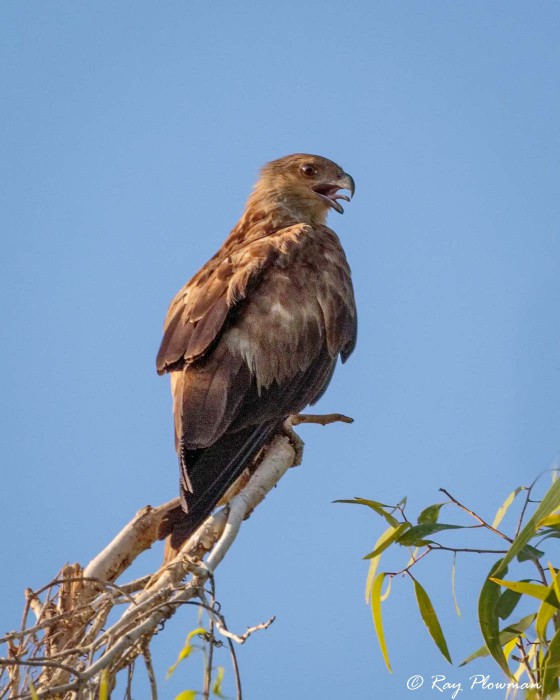
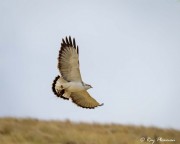
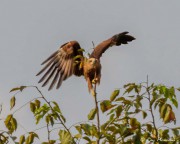
Raptors, NW Vultures and Osprey Notes
Most featured species are ‘Red List 2019’ assessed as ‘Least Concern’. Exceptions are the Grey-headed Fish Eagle, Red Kite and Andean Condor, listed as ‘Near Threatened’ and the Galapagos Hawk listed as ‘Vulnerable’.
Most raptors and Osprey exhibit reverse size dimorphism where the females are larger than males. New World Vultures only exhibit minimal plumage and size dimorphism; an exception is an Andean Condor which shows a higher degree of plumage dimorphism. It’s difficult to identify gender when photographing lone individuals.
Two of my favourite raptor species are the endemic Galapagos Hawk because it is one of the few endemic raptors. And the White-bellied Sea Eagle that starts with brown plumage changing to white at the age of five to six. A supplementary gallery below shows the plumage of juvenile, immature and adult birds.
Crested or Oriental Honey-buzzard identification of subspecies is difficult because there are several morphs of the. I think the male is a ‘dark morph’ and the female a ‘normal morph’, probably both ssp torquatus. Males have dark eyes, while females have yellow eyes.
I photographed a female Variable Hawk, ‘pale morph’ at 3812m in the Antisana Ecological Reserve in Ecuador’s high Andes. This high-altitude subspecies occurs between 2800m-5000m. The bird had just pounced on a small animal and was flying away with its prey.
I’ve photographed the displayed species in habitats that included gardens, forest, woodland, often near fresh or saltwater in Australia, England, Singapore, Trinidad, Ecuador, Galapagos and New Zealand. Some species were breeding residents, while others were migratory or seasonal visitors.
The plumage of Juvenile, Immature and Adult White-bellied Sea Eagles
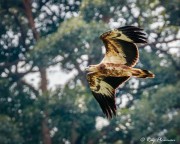
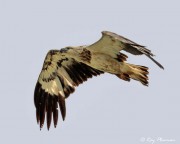
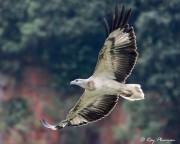
White-bellied Sea Eagle Plumage Notes
Images are showing phases in plumage from juvenile through first and second-year immatures to young-adult and adult, which takes around four to five years. Adults breed around six years, and they probably have around a thirty-year life span.
Typical Owls
Typical Owls Notes
Images of displayed species are ‘Red List 2019’ assessed as ‘Least. Habitats included gardens, forest, woodland, sometimes near freshwater. Some species were breeding residents, while others were migratory or seasonal visitors. This nocturnal family of birds can be challenging to photograph as they are often asleep when trying to photograph them. I’ve photographed these species in Singapore, Galapagos, Trinidad and New Zealand. The Short-eared Owl (Asio flammeus galapagoensis) is Galapagos endemic sub-species.
Birds of Prey Behaviour
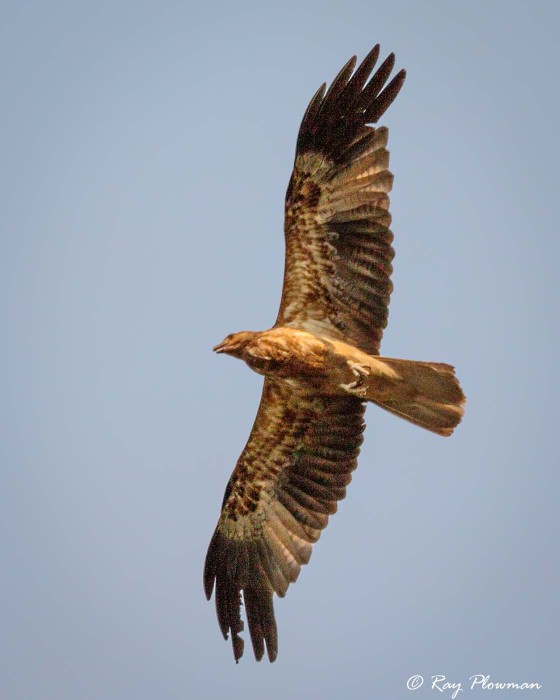
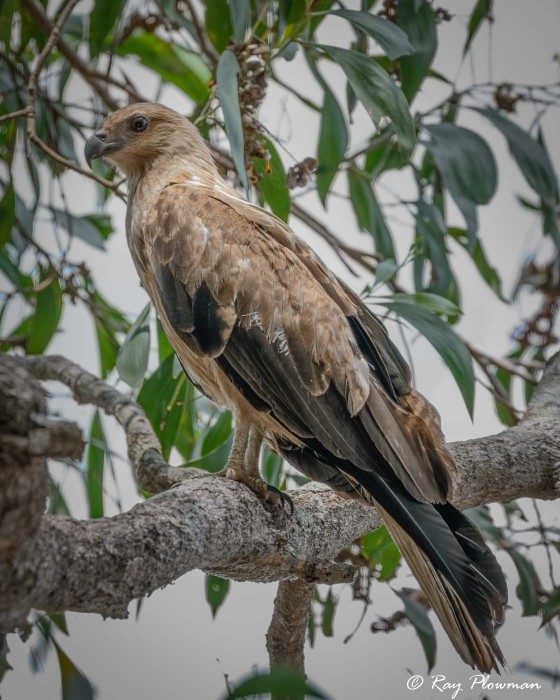
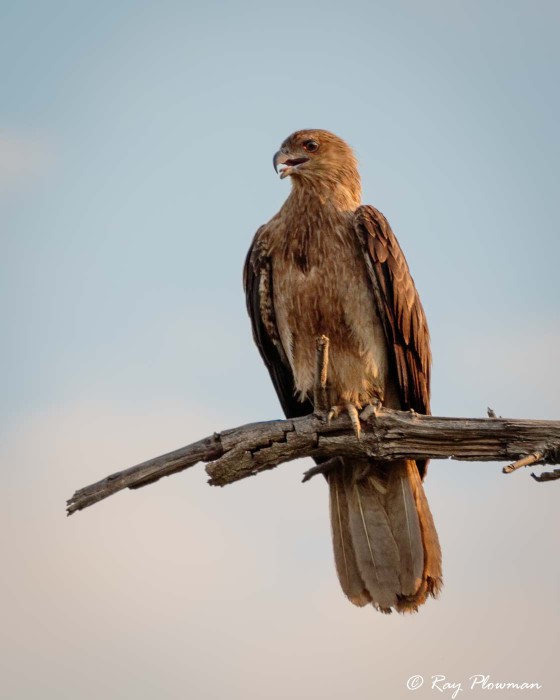
![Brown Hawk-Owl [Brown Boobook] (Ninox scutulata burmanica) at Bukit Timah Nature Reserve in Singapore Brown Hawk-Owl [Brown Boobook] (Ninox scutulata burmanica) at Bukit Timah Nature Reserve in Singapore](https://rayplowman.co.uk/wp-content/uploads/2018/08/Brown-Hawk-owl-5945-467x700.jpg)
![Brown Hawk-Owl [Brown Boobook] (Ninox scutulata burmanica) at Bukit Timah Nature Reserve in Singapore Brown Hawk-Owl [Brown Boobook] (Ninox scutulata burmanica) at Bukit Timah Nature Reserve in Singapore](https://rayplowman.co.uk/wp-content/uploads/2018/08/Brown-Hawk-owl-5940-467x700.jpg)
Birds of Prey Behaviour Notes
Raptors hunt from a perched position or seek out their prey when soaring or flying in the sky. The gallery displays four genera flying, and two either resting or perched looking for prey.
Owls are nocturnal resting up during the day but are often quite active. My first photo of a Buffy Fish Owl was of a one-eyed bird perched near the mangrove swamp at Pasir Ris Nature Park. I’ve also photographed them in Botanical Gardens and Ang Mo Kio Park. The Short-eared Owl also has only one eye. Both these birds have survived for several years.
Spotted Wood Owls are uncommon residents in Singapore; the images are of a juvenile and its parents at Pasir Ris Park. Brown Hawk-owl aka Brown Boobook is a winter visitor to Singapore. It’s a small owl that I photographed at Bukit Timah Nature Reserve at the edge of tropical forest.
Photo Essay – White-bellied Sea Eagles
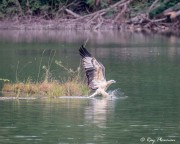
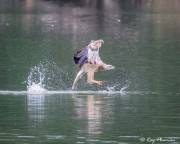
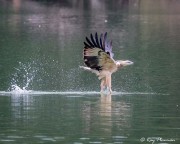
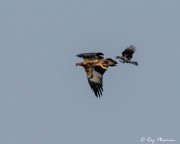
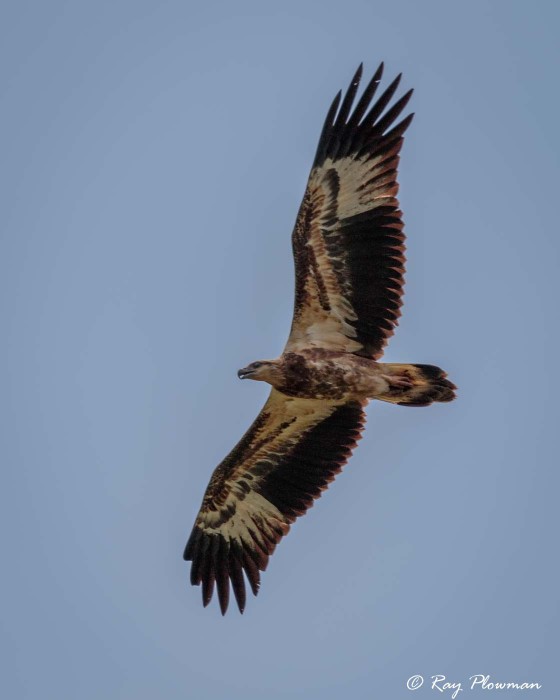
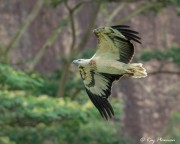
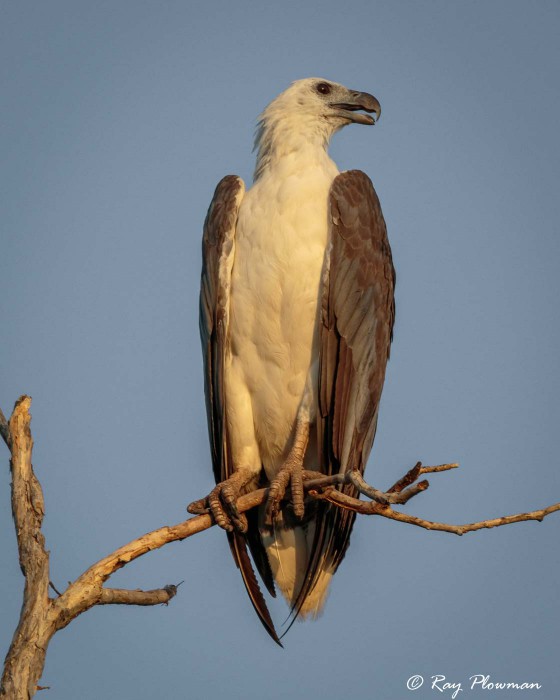
White-bellied Sea Eagle Photo Essay Notes
The photo essay displays an immature White-bellied Sea Eagles fishing, a crow harassing a juvenile, a juvenile and immature flying and an adult perched in a tree as the sun began to set.
Adults prey on relatively large-sized birds; I saw them try and take grey herons. An Australian Darter was perched drying its wings while a White-bellied Sea Eagle perched in the same tree, maybe its next meal.
Photo Essay – Brahminy Kites
Brahminy Kite Photo Essay Notes
Displayed in the photo essay of a Brahminy Kite flying and fishing at Sungei Buloh Wetland in Singapore, the light on the water was unique. The second sequence is adult and juvenile birds at the Chinese Garden in Singapore. The final image is a kite flying at Cape Gloucester in Queensland.
Photo Essay – Aerial Conflict White-bellied Sea Eagle and Grey-headed Fish Eagle
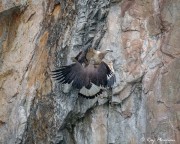
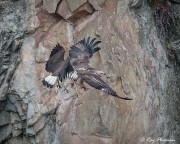
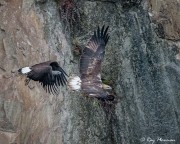
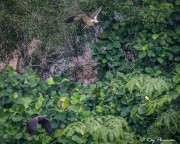
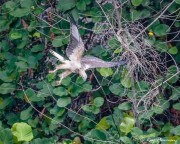
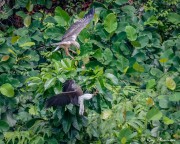
Aerial Conflict Photo Essay Notes
I photographed the following sequence at Dairy Farm Nature Park, which shows an adult Grey-headed Fish Eagle attacking an immature White-bellied Sea Eagle. The white-bellied flies faster to get away, then gains height gets behind the grey-headed and finally swoops down to attack the grey-headed which defends and then flies off into the trees. A brahminy kite chassed of the white-bellied sea eagle as it strayed into its territory.
Photo Essay - Black Vulture Behaviours at Grande Riviere
Birds of Prey Taxonomy
Birds of Prey belong to the Afroaves clade which includes:
(a) Superorder Accipitrimorphae comprising two orders:
(i) Cathartiformes (New World Vultures) with one family the Cathartidae,
(ii) and Accipitriformes (Hawks, Kites, Eagles, and Osprey) with two families Accipitridae (Raptors), and Pandionidae (Osprey),
(b) Order Strigiformes (Barn Owls and Typical Owls) with one featured family, the Strigidae (Typical Owls).






















![Brown Hawk-Owl [Brown Boobook] (Ninox scutulata burmanica) at Bukit Timah Nature Reserve in Singapore Brown Hawk-Owl [Brown Boobook] (Ninox scutulata burmanica) at Bukit Timah Nature Reserve in Singapore](https://rayplowman.co.uk/wp-content/uploads/cache/2018/08/Brown-Hawk-owl-5953/2654297631.jpg)












![Brown Hawk-Owl [Brown Boobook] (Ninox scutulata burmanica) at Bukit Timah Nature Reserve in Singapore Brown Hawk-Owl [Brown Boobook] (Ninox scutulata burmanica) at Bukit Timah Nature Reserve in Singapore](https://rayplowman.co.uk/wp-content/uploads/2018/08/Brown-Hawk-owl-5928-560x700.jpg)
![Brown Hawk-Owl [Brown Boobook] (Ninox scutulata burmanica) sleeping at Bukit Timah Nature Reserve in Singapore Brown Hawk-Owl [Brown Boobook] (Ninox scutulata burmanica) sleeping at Bukit Timah Nature Reserve in Singapore](https://rayplowman.co.uk/wp-content/uploads/2018/08/Brown-Hawk-owl-5921-560x700.jpg)










